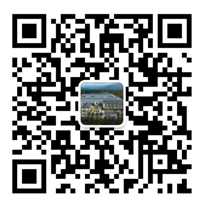Material, Structure, and Characteristics of Transmission Belt Cloth
In today's rapidly developing industrial and mechanical fields, transmission belt cloth not only plays an important role in traditional manufacturing, but also gradually applies to high-tech fields with technological progress, demonstrating its extraordinary value in various aspects. By delving into the material selection, structural design, and unique performance characteristics of transmission belt cloth, we aim to uncover the inherent mysteries of this indispensable power transmission material in modern industry.
Material of transmission belt cloth:
Drive belt fabric is usually made of high-performance synthetic fibers such as nylon, polyester, or aramid. These materials are chosen because of their high durability, strength, and lightweight. For example, nylon has good elasticity and wear resistance, making it an ideal material for making transmission belt fabrics. Polyester is widely used due to its excellent mechanical properties and dimensional stability. Aramid, due to its ultra-high strength and thermal stability, performs outstandingly in application scenarios that require extreme conditions.
Structure of transmission belt cloth:
The structural design of the transmission belt fabric aims to optimize its functionality and durability. Most transmission belt fabrics adopt a multi-layer structure, including a load-bearing layer, a compression layer, and a covering layer. The bearing layer is usually woven from the high-performance fibers mentioned above and is the core part of the transmission belt fabric, responsible for providing the necessary tensile strength and tear resistance. The compression layer is located between the bearing layers and is usually composed of rubber or other flexible polymer materials to absorb the impact loads generated during operation. The covering layer protects the internal structure from external environmental influences such as wear and chemical corrosion.
Characteristics of transmission belt cloth:
1. High strength and durability
Drive belt cloth is usually made of multiple layers of high-strength fiber materials, such as cotton cloth, nylon cloth, or polyester cloth. These materials have excellent tensile strength and wear resistance, and can be used for a long time under high load and high speed conditions without being easily damaged.
2. Good flexibility
The transmission belt cloth has good flexibility and can adapt to various complex transmission paths and contours. This makes it perform well in transmission systems that require frequent bending and detours, reducing the risk of belt wear and breakage.
3. Excellent heat and oil resistance
Modern transmission belt fabrics are usually specially treated to have excellent heat and oil resistance. This enables it to operate stably in high temperature and oily environments, and is widely used in fields such as automobiles, industrial machinery, and agricultural machinery.
4. High transmission efficiency
The friction coefficient of the transmission belt cloth is relatively high, which can effectively transmit power and reduce energy loss. Its transmission efficiency can usually reach over 98%, suitable for occasions that require efficient transmission.
5. Low maintenance costs
The structure of the transmission belt cloth is simple, easy to manufacture and install, and does not require a complex lubrication system. This makes its maintenance cost lower and suitable for large-scale industrial applications.
application area
1. Industrial Machinery
In industrial machinery, transmission belt cloth is widely used in various transmission systems, such as conveyor belts, transmission belts, and lifting belts. Its high strength and durability enable it to operate stably under high load and high speed conditions.
2. Automotive industry
In the automotive industry, drive belt cloth is commonly used in engine transmission systems, such as timing belts and fan belts. Its excellent heat resistance and oil resistance enable it to be used for a long time in high-temperature and oily environments of the engine.
3. Agricultural machinery
In agricultural machinery, transmission belt cloth is used in various transmission and conveying systems, such as combine harvesters and tractors. Its excellent flexibility and durability enable it to adapt to complex working environments and frequent bending movements.
In summary, the transmission belt fabric has demonstrated its irreplaceable value in various industrial applications through its preferred materials, meticulous structural design, and outstanding features. Understanding these characteristics is crucial whether designing new mechanical systems or maintaining existing equipment, as they help engineers select the most suitable materials to ensure efficient and stable operation of the system. With the continuous advancement of technology, it is expected that the performance of transmission belt fabrics will be further optimized in the future to meet more diverse and demanding application requirements.
-
 Email:wanss@kusan-if.com
Email:wanss@kusan-if.com
-
 website:www.kusan.cn
website:www.kusan.cn
-
 business address one:No. 3, Futai Road, Lancun Town, Jimo District, Qingdao, Shandong business address two:No. 99, Fengjin Road, Shangma Street, Chengyang District, Qingdao, Shandong
business address one:No. 3, Futai Road, Lancun Town, Jimo District, Qingdao, Shandong business address two:No. 99, Fengjin Road, Shangma Street, Chengyang District, Qingdao, Shandong

Scan the code
Copyright © 2020-2030 www.kusan.cn Qingdao Jiushan Textile fabric Co., Ltd. All Rights Reserved
website:www.kusan.cn address:No. 3, Futai Road, Lancun Town, Jimo District, Qingdao, Shandong ICP Certificate: ICP Lu No. 20021986-1

 简体中文
简体中文 Japanese
Japanese 한국어
한국어
